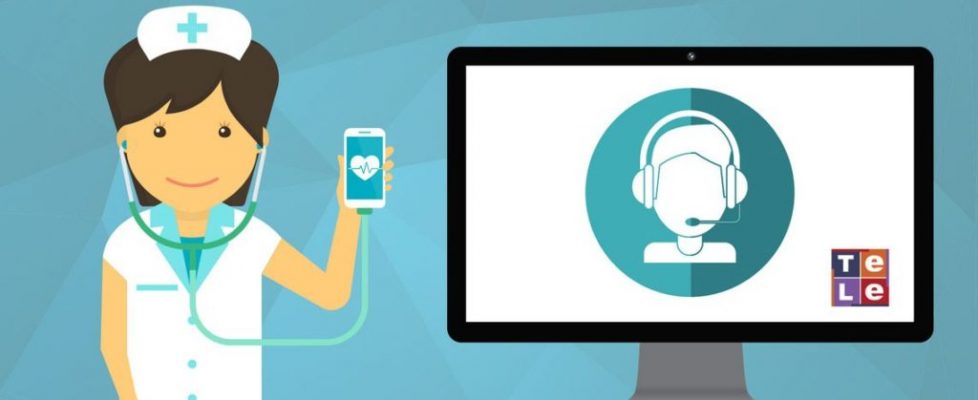Home Health Industry ‘Getting Closer’ to Reimbursement for Telehealth Visits
By Robert Holly | May 18, 2020
Despite significant roadblocks, the home health industry is getting closer to securing direct reimbursement for visits delivered via telehealth technology, industry insiders believe.
Over the past two few months, the Centers for Medicare & Medicaid Services (CMS) and the White House have taken numerous steps to ramp up the use of telehealth services during the COVID-19 emergency. In doing so, federal policymakers hoped to minimize person-to-person contact and preserve stockpiles of personal protective equipment (PPE).
“We dramatically expanded access to telehealth … for Medicare beneficiaries,” President Donald Trump said during a late April White House coronavirus task-force briefing. “The number of Medicare patients using telehealth has increased from roughly 11,000 a week to more than 650,000 [people] a week.”
But while certain health care practitioners and providers have been granted newfound telehealth flexibility under Medicare, home health agencies have largely been left to fend for themselves.
Currently, there isn’t a way for home health providers to bill for in-home telehealth visits — or count remote visits toward low-utilization payment adjustment (LUPA) thresholds.
In other words: The coronavirus might have led to a quantum leap for telehealth broadly, but not for the nation’s in-home care providers, many of which have transitioned to the front lines of the outbreak.
As a result of the coronavirus, the demand for telehealth technology is projected to increase seven-fold by 2025, according to research from business consulting firm Frost & Sullivan research.
“This is an opportunity we don’t want to miss,” National Association for Home Care & Hospice (NAHC) President William A. Dombi said during a May 15 virtual town hall hosted by Home Health Care News.
Home health providers originally weren’t supposed to be left out of the sudden telehealth boom.
The Coronavirus Aid, Relief and Economic Security (CARES) Act was passed by Congress with overwhelming, bipartisan support and signed into law by President Trump on March 27. Leading up to that date, many felt confident that legislation would create a pathway for direct home health telehealth reimbursement.
On its end, NAHC’s policy team participated in multiple early-morning discussions in an effort to secure reimbursement for telehealth services under the home health benefit while also making sure telehealth could be provided under the hospice program.
“We thought everything was safe,” Dombi said. “We were still where we needed to be in the game to get reimbursement under the home health benefit and authorization under the hospice program.”
Right before the CARES Act was signed into law, however, its legislative language shifted. Instead of directly creating that reimbursement pathway, it merely instructed CMS to “encourage” the use of telehealth.
Yet CMS says it cannot unilaterally create a mechanism for home health telehealth reimbursement without congressional action.
NAHC leaders and other industry advocates are now hoping for another shot on Capitol Hill.
“We’re back at it,” Dombi said. “And we’re hoping to see [this] week, early, legislation introduced that would allow for payment of telehealth to home health agencies in one of two ways, if not both ways.”
The first of those two ways is through the home health benefit itself, he clarified. The second option is to put home health agencies and hospices in the same position as physicians, therapists and nurse practitioners (NPs) by allowing them to separately bill Medicare Part B for telehealth services furnished.
“I think we’re getting closer to making it happen,” Dombi said.
Moorestown, New Jersey-based Bayada Home Health Care is among the providers pushing for more telehealth flexibility, according to David Totaro, its chief government affairs officer. Totaro also participated in the May 15 virtual town hall, in addition to Stephen Vacarro, president of provider solutions for HHAeXchange, a home care technology partner.
At the very least, Bayada officials believe telehealth visits should count toward LUPAs, Totaro, who also serves as chairman for the Partnership for Medicaid Home-Based Care (PMHC), said.
While Dombi was optimistic about home health telehealth support coming soon, Totaro was more measured.
“Given today’s environment, it’s probably not at all certain whether this is going to be feasible,” he said during the town hall.
Traditional, fee-for-service Medicare hasn’t presented an opportunity for home health telehealth reimbursement, but providers can still find some payment opportunity under Medicare Advantage (MA) and Medicaid.
“Don’t ignore that many of the Medicare Advantage plans are now recognizing and paying for telehealth services as well as state Medicaid programs,” Dombi said. “If your state Medicaid program isn’t paying for it, roll up your sleeves and do some lobbying.”
HHAeXchange clients have conducted roughly 5,000 remote nursing assessments in the Medicaid space, Vacarro said.
If the reimbursement circumstances are right, Medicaid-reimbursed in-home care providers may be quick to turn to telehealth and other technology tools in order to help cut costs on expensive PPE, he noted.
“They just don’t have the financial ability to go out and purchase PPE,” Vacarro said. “They need other tools they can leverage to protect their caregivers during this critical time.”

